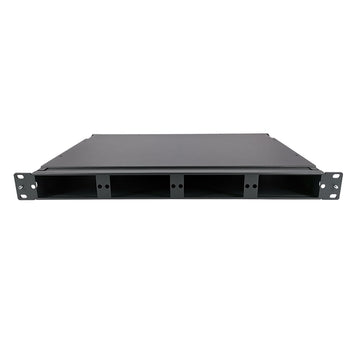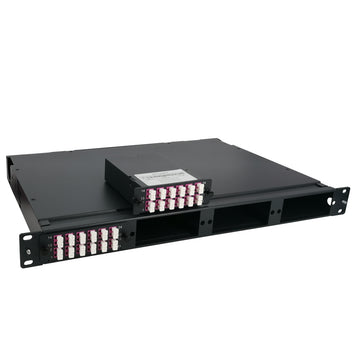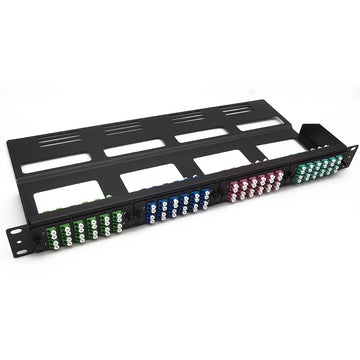Introduce for WDM/OTN Latency
Introduce for WDM/OTN Latency
What does WDM mean?
- WDM stands for wavelength division multiplexing, a technique used to send multiple channels of data over the same cable in fiber-optic transmission.
- Fiber-optic cables transmit data via pulses of light, which contain a range of wavelengths or colors. WDM enables each pulse to carry data from different sources on multiple wavelengths.
- With WDM, a single fiber strand may carry up to 80 channels of data.
What Is Latency
In a communications network, latency refers to the time it takes for original data to go through a series of processing operations such as encoding on a forwarding device, transmission from the transmit end over transmission links, and reception and decoding on the receive end (destination). The network latency consists of the following parts:
- Sending latency: The period from the time when the original data enters the forwarding device to the time when the original data completely enters the transmission medium, depending on the data volume/channel bandwidth and processing performance of the devices
- Transmission latency: The period from the time when the data is sent from the transmit end to the time when the data is completely received by the receive end, depending on the transmission distance and transmission medium
- Processing latency: The period taken by the receive-end device to decode and restore the received information to the original data, depending on the processing performance of the device.
WDM/OTN Latency Distribution
The WDM/OTN network is an optical transmission system that uses optical fibers as the signal transmission media. As shown below in the preceding figure, transmission links and physical devices are the main factors affecting network latency in a typical WDM/OTN system(WDM library).
For transmission links, the latency introduced by line fibers and dispersion compensation fibers (DCFs) needs to be considered:
- The latency introduced by line fibers refers to the time it takes for optical signals to travel over line fibers.
- The latency introduced by DCFs refers to the time it takes for optical signals to travel over DCFs.
For physical devices, the latency introduced by electrical-layer and optical-layer units needs to be considered:
- The latency introduced by the optical-layer unit is generated when the optical-layer unit processes optical signals.
- The latency introduced by the electrical-layer unit is generated when the client-side service signals are converted into electrical signals at the receive end, and then the electrical signals undergo processing such as mapping, FEC encoding/decoding, and electrical cross-connections inside the board.
The following table lists the latency distribution and magnitudes of WDM/OTN networks.
| Latency Source | Introduced Latency Magnitude | Contributor to Latency |
|---|---|---|
| Line fiber | 5 μs/km | Inherent latency of optical signal transmission in fiber media |
| DCF | 0.625 μs/km | Optical signal transmission over DCFs, related to the compensation distance |
| EDFA optical amplifier | 100 ns | Internal erbium-doped fibers |
| RAMAN optical amplifier | ns | Pigtails |
| MUX/DEMUX unit | ns | Pigtails |
| FOADM unit | ns | Pigtails |
| ROADM unit | ns | Pigtails |
| OTU board | 10 μs to 100 μs, load-independent | Electrical signal encapsulation/decapsulation, and FEC encoding/decoding |
| OTN tributary board | 10 μs to 100 μs, load-independent | Electrical signal encapsulation/decapsulation, and FEC encoding/decoding |
| OTN line board | 10 μs to 100 μs, load-independent | Electrical signal encapsulation/decapsulation, and FEC encoding/decoding |
| OTN cross-connect board | 1 μs to 2 μs | OTN electrical signal cross-connect |
WDM/OTN Latency Performance Optimization Technologies
According to the preceding analysis, the WDM/OTN network latency is mainly introduced by devices and line fibers. The fiber transmission latency accounts for more than 90% of the network latency, followed by device components. Huawei WDM/OTN technology optimizes networking and optical-layer and electrical-layer devices to reduce the end-to-end (E2E) transmission network latency and ensure the minimum network latency.
- Simplified network architecture design, one-hop service transmission, and reduced latency
The simplified network architecture design reduces forwarding nodes, constructs a one-hop transmission network, and reduces the system latency. For example, the conventional ring or chain topology is optimized to a full-mesh topology during backbone network planning and design. On the metro network, WDM/OTN devices are shifted downwards to CO nodes.
- Optical-layer optimization:
- Leverages the coherent communication technology, DCM-free, to eliminate the extra latency caused by DCFs.
- Replaces the DCF-based dispersion compensation modules with the FBG-based dispersion compensation modules.
- Leverages the advanced optical-layer technologies of ROADM/OXC to implement optical-layer pass-through and switching, reducing the number of OEO times.
- Replaces EDFAs with intelligent Raman amplifiers. These Raman amplifiers do not need the erbium-doped fiber as the medium. This avoids extra latency caused by the EDFA, effectively extends the all-optical transmission distance, and reduces the number of electrical regeneration sites.
- Electrical-layer optimization:
- Optimizes FEC algorithm performance, increases the transmission distance, and reduces the number of electrical regeneration sites.
- Flexibly sets the number of FEC levels and reduces the latency penalty.
- Sets different encapsulation modes for various features.
WDM/OTN Latency Management Solution
Latency management is a comprehensive application based on latency measurement and data estimation of network links and nodes to provide network or service latency that can be sensed, sold, committed, and guaranteed.
Measurable Latency
E2E latency indicators are essential to verification of service level agreements (SLAs) between users and network carriers, especially to latency-sensitive services. Based on the real-time network latency monitoring data, network carriers establish dynamic network latency models and adjust the network transmission policies by predicting latency changes. Therefore, how to obtain the latency data of the transmission link is particularly important.
Traditional methods for measuring the link latency have shortcomings, such as inaccurate precision and service interruption during measurement. For example:
- Externally connected meters: Services are interrupted during the measurement.
- Estimation: The transmission latency is estimated based on the lengths of the fiber links at the source and sink ends. This method ignores the latency introduced by the electrical layer and has low precision. In addition, the length of the fiber link is difficult to obtain.
To provide latency-sensitive customers with latency performance priority services, ITU-T G.709 adds the latency measurement function to support online real-time monitoring of network latency. In ITU-T G.709, this function is associated with ODUk PM-layer and TCM-layer overheads. The PM and TCM overheads are latency measurement overheads and located in row 2 and column 3 of the OTU frame. Bit 7 is related to the PM layer test, bits 1 to 6 are related to the TCM layer test, and bit 8 is a reserved bit (the default value is 0). The function is classified into ODUk PM-layer test (DMp) and ODUk TCMi-layer test (DMti). The latency at different TCMi layers can be tested based on the TCMi enable status.












